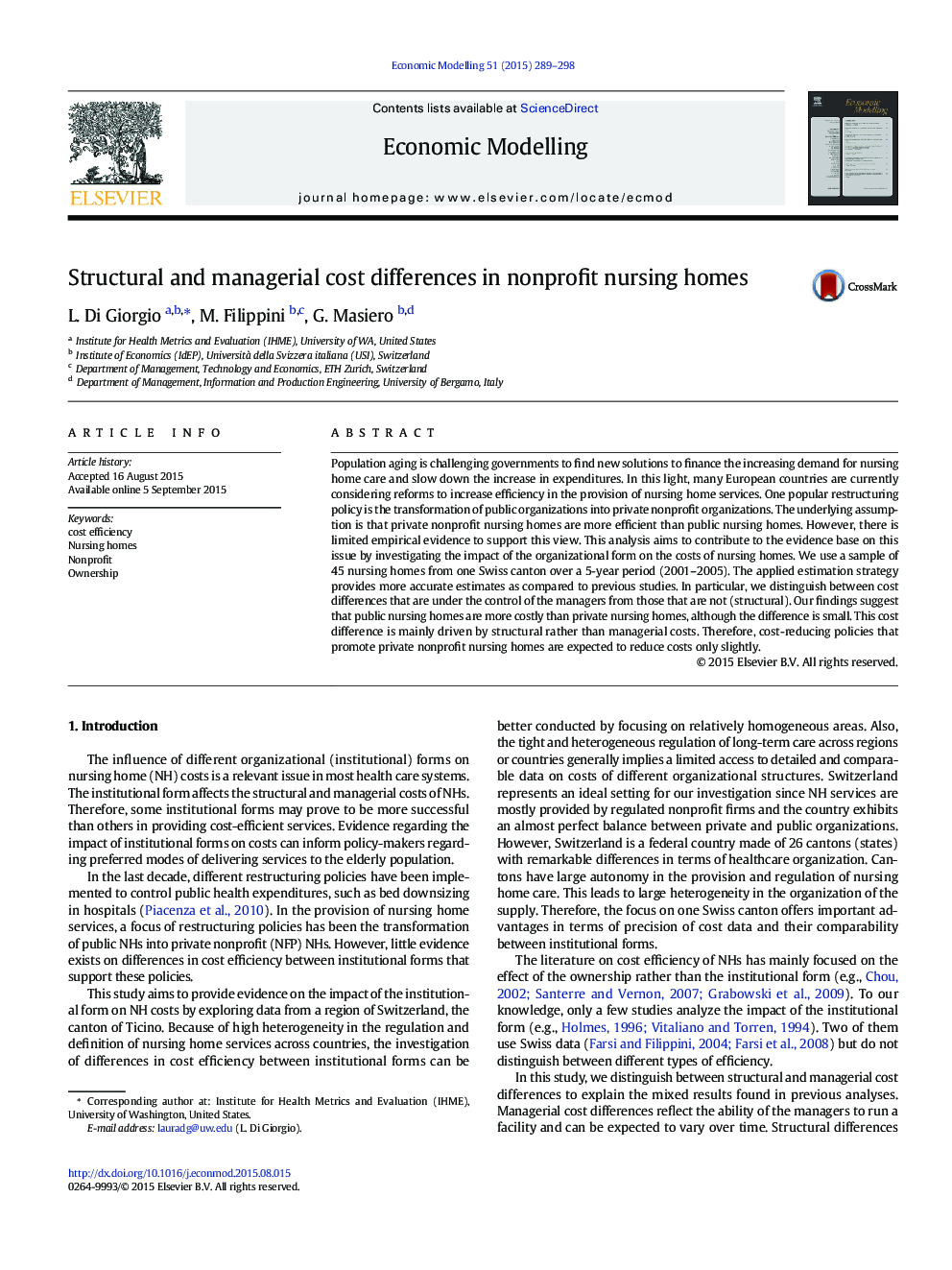| Article ID | Journal | Published Year | Pages | File Type |
|---|---|---|---|---|
| 5053724 | Economic Modelling | 2015 | 10 Pages |
Abstract
Population aging is challenging governments to find new solutions to finance the increasing demand for nursing home care and slow down the increase in expenditures. In this light, many European countries are currently considering reforms to increase efficiency in the provision of nursing home services. One popular restructuring policy is the transformation of public organizations into private nonprofit organizations. The underlying assumption is that private nonprofit nursing homes are more efficient than public nursing homes. However, there is limited empirical evidence to support this view. This analysis aims to contribute to the evidence base on this issue by investigating the impact of the organizational form on the costs of nursing homes. We use a sample of 45 nursing homes from one Swiss canton over a 5-year period (2001-2005). The applied estimation strategy provides more accurate estimates as compared to previous studies. In particular, we distinguish between cost differences that are under the control of the managers from those that are not (structural). Our findings suggest that public nursing homes are more costly than private nursing homes, although the difference is small. This cost difference is mainly driven by structural rather than managerial costs. Therefore, cost-reducing policies that promote private nonprofit nursing homes are expected to reduce costs only slightly.
Related Topics
Social Sciences and Humanities
Economics, Econometrics and Finance
Economics and Econometrics
Authors
L. Di Giorgio, M. Filippini, G. Masiero,
